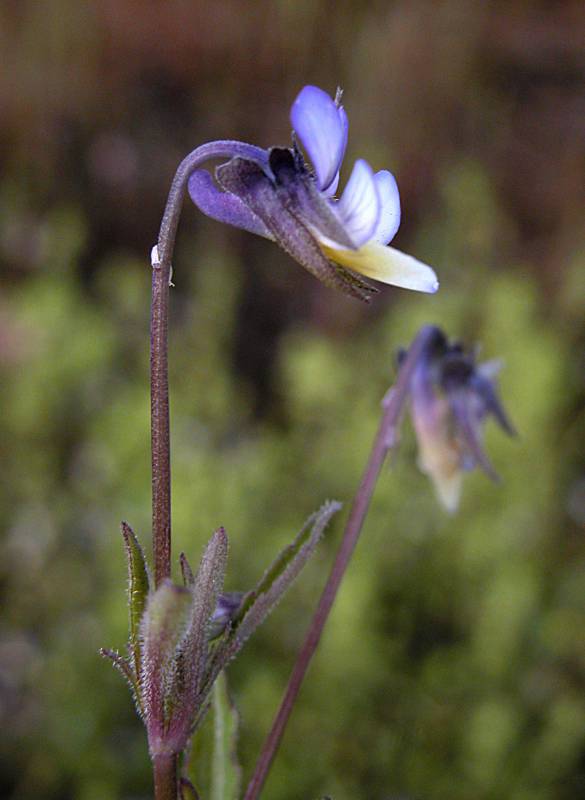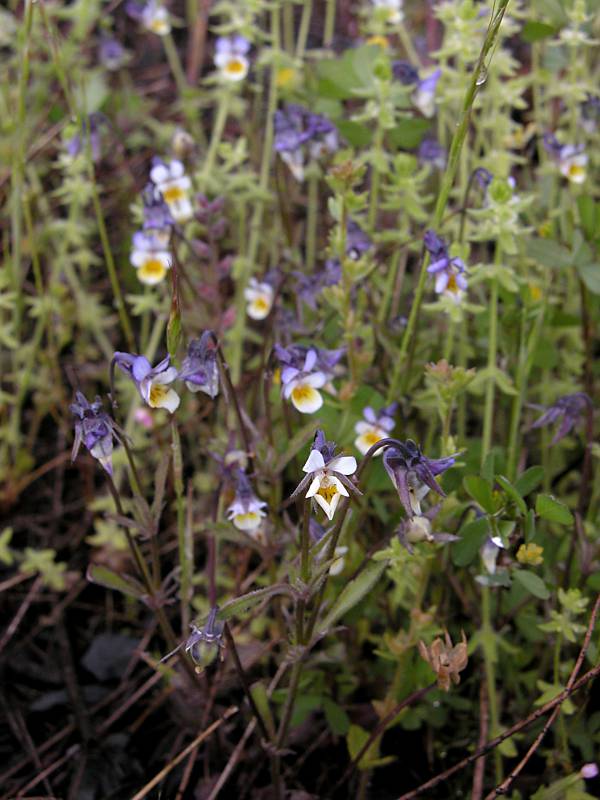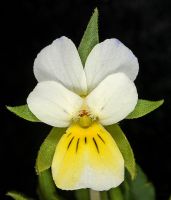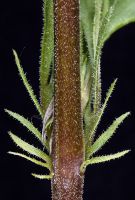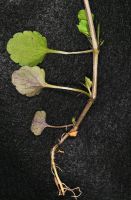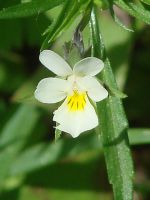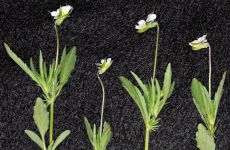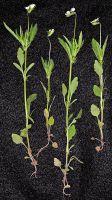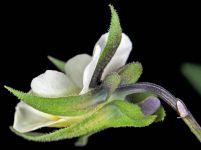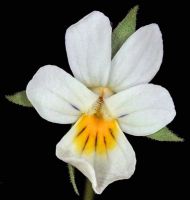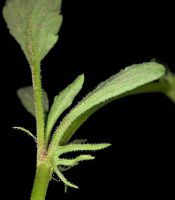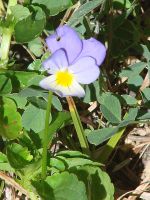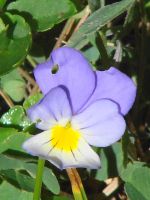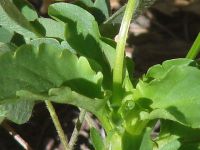Distribution: Occurring chiefly west of the Cascades crest in Washington; British Columbia to California, east across most of North America to the Atlantic Coast.
Habitat: Fields, roadsides, wastelots, and other disturbed areas where escaping from cultivation.
Flowers: March-June
Origin: Introduced from Europe
Growth Duration: Annual
Conservation Status: Not of concern
Pollination: Bumblebees, bees, flies
Puberulent, freely-branched annual, 1-3 dm. tall.
Leaf blades ovate to lanceolate, coarsely round-toothed, 1-3 cm. long, about equaling the petioles; stipules very large, laciniate into 5-9 segments, usually with one leaf-like segment nearly as large as the main blade.
Flowers long-pedunculate, solitary in the leaf axils, whitish or light yellow with a tinge of blue, the spur short; sepals lanceolate, about as long as the petals; style head copiously short-hairy.
Fruit a 3-valved capsule, ovary superior, placentation parieta
Publication: Prodr. Stirp. Gott. 73. 1770.
PNW Herbaria: Specimen records of Viola arvensis in the Consortium of Pacific Northwest Herbaria database.
WA Flora Checklist: Viola arvensis checklist entry.
OregonFlora: Viola arvensis information.
E-Flora BC: Viola arvensis atlas page.
CalPhotos: Viola arvensis photos.
USDA Plants: Viola arvensis information.

